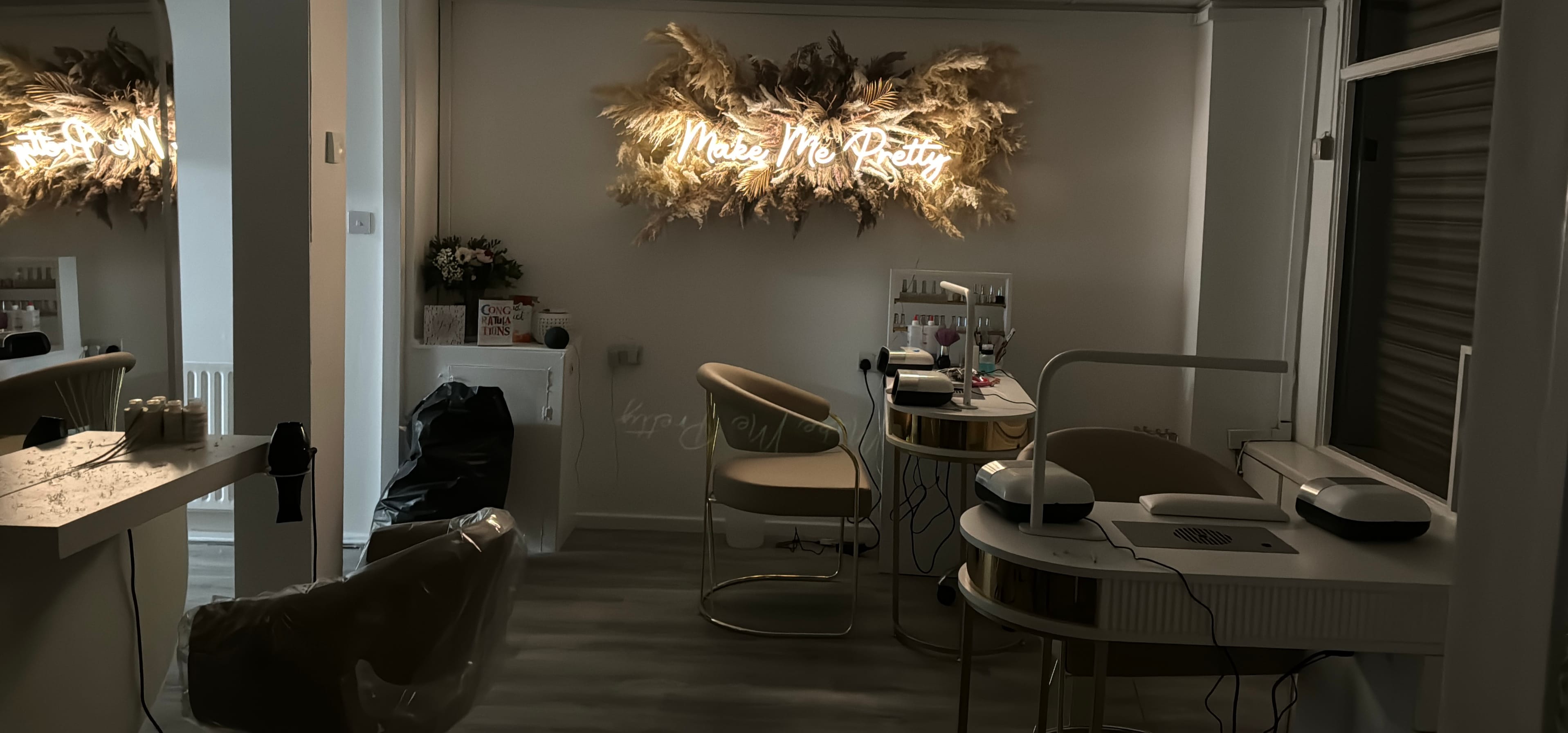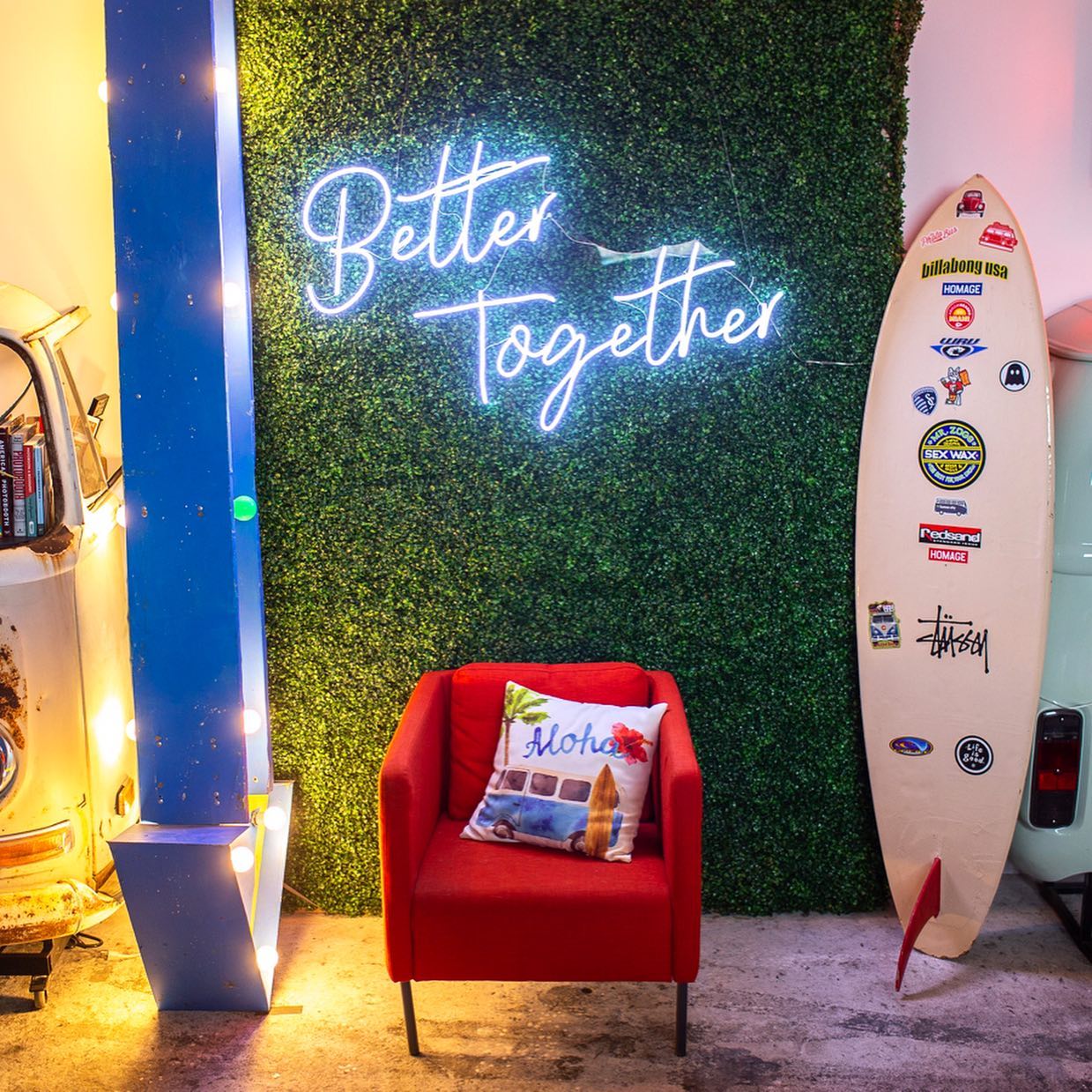Neon signs have been a hallmark of creativity and visual identity for businesses for over a century. Initially popularized in the early 20th century, neon name sign quickly became associated with urban landscapes, particularly in cities like Las Vegas, New York, and Los Angeles. With their vibrant, glowing colors and bold presence, neon signs could not be ignored. Today, neon name signs have evolved from their classic forms into a customizable and versatile design choice for businesses. They are not only used for advertising but also for branding, creating an unforgettable customer experience, and enhancing the atmosphere of a space. But how can a neon signs transform the aesthetics and identity of a business, and what factors should be considered when designing one for maximum impact? Let's explore these questions in depth.
1. The Role of Neon Name Signs in Branding
A neon name sign plays a crucial role in establishing a business's visual identity. Branding is about communicating a business's values, mission, and personality, and a neon name sign does this through design, color, and placement. When designed correctly, a neon sign can create a lasting impression on customers, establishing a sense of recognition that can transcend the physical space of a business.
The name itself is the most important element in a brand's identity, and when illuminated by neon, it stands out in a bold, visually striking way. This makes it easier for customers to remember the business, increasing brand recall and awareness. A well-designed neon sign can be the cornerstone of a business’s overall aesthetic and can influence how the brand is perceived. Whether it's a trendy café, a high-end restaurant, or a boutique store, a neon name sign communicates the business’s character in a way that other forms of signage simply cannot.
2. Impact on Customer Experience

A neon name sign does more than just advertise. It can transform the entire ambiance of a space. Lighting is a critical element of interior design, as it can set the tone of a room. Neon lights, with their soft, vibrant glow, have a unique ability to create an inviting, energizing, or even relaxing atmosphere. When customers walk into a space where the business name is illuminated in neon, it sets the mood immediately.
For example, a neon name sign in a coffee shop can create a warm, welcoming environment, while a neon sign in a trendy clothing store could evoke a feeling of modernity and style. Additionally, the soft glow of neon lights can help enhance a customer’s mood. Many people are drawn to neon for its nostalgic, retro appeal, which can evoke a sense of excitement and curiosity.
By using neon signs, businesses can ensure that the customer experience goes beyond just purchasing products or services. The experience becomes an emotional one, influenced by the atmosphere that the sign contributes to. This immersive experience is increasingly important in today’s competitive market, where businesses need to offer more than just functional products—they need to offer a compelling experience that customers want to engage with.
3. Visibility and Differentiation
In crowded markets, standing out is key to attracting customers. Neon signs are designed to be seen from a distance, and their glow makes them especially effective at night. A neon name sign, with its colorful lights and bold design, helps businesses stand out in both daytime and nighttime environments. This visibility is especially important for small businesses or startups that are still building their customer base.
Neon signs help businesses differentiate themselves from competitors. With digital marketing and online advertising becoming more pervasive, physical signage still holds significant value. A neon name sign adds a level of uniqueness to a business that is hard to replicate. Its visual allure and distinctive look help set a business apart in a world that is increasingly saturated with standard signage and marketing tools.
4. Customization and Personalization
One of the greatest advantages of neon name signs is the vast array of customization options available. Unlike static or traditional signs, neon signs can be tailored to fit a brand’s specific needs. The design process allows for the incorporation of custom fonts, colors, sizes, and even effects that make a neon name sign truly unique.
Colors play a significant role in conveying messages and emotions. For instance, bright red neon can evoke excitement or urgency, while soft pastel colors like pink or blue can suggest calmness or serenity. The right color palette will depend on the target demographic and the emotional message the business wants to convey. Custom fonts further enhance a brand’s identity, and with neon, even the typography can have a sense of movement and personality.
Neon name signs can also include special effects, such as flickering or flashing, which can be strategically used to draw attention. These features can be particularly useful for businesses in industries like entertainment, nightlife, or retail, where capturing attention and creating a fun atmosphere is key.
5. Practical Considerations When Designing a Neon Name Sign
While neon name signs are a powerful branding tool, there are several important factors to consider to ensure the sign delivers its maximum impact. These factors include location, design elements, durability, and the technical aspects of neon signage.
a. Location
The placement of a neon name sign is critical for its effectiveness. The goal is to ensure that the sign is visible to passersby, which requires strategic positioning. Whether it is displayed outside a storefront or within the interior of a building, the sign should be placed where it can capture the attention of people as they enter the space or walk by. Outdoor neon signs must be positioned high enough to be visible over other visual clutter and low enough to be easily readable.
If the neon name sign is for indoor use, it should be placed in an area that complements the overall interior design. For example, it could be placed behind the counter of a café, in the entrance hall of a boutique, or as a focal point in a bar or restaurant.
b. Design Elements
The design of the neon sign should be an extension of the business's overall branding. The name should be legible and easy to read at a distance. This means paying attention to font size, type, and the color contrast between the neon glow and the background. Additionally, the shape of the sign is important. A simple design may suffice for some businesses, while others may require a more complex or artistic form.
For example, a bakery might opt for a neon name sign that incorporates a cupcake illustration alongside the business name, while a tattoo studio might choose a bold, geometric design with sharp angles and dark neon colors to reflect its edgy vibe. All these decisions should align with the image and message the business wants to project.
c. Durability and Maintenance
Neon signs are long-lasting, but they require some maintenance to ensure they continue to function effectively. Traditional glass tube neon signs can be fragile, so it’s important to consider the durability of the sign. LED neon signs have become a popular alternative to traditional glass neon signs, as they are more energy-efficient, durable, and can be customized in the same vibrant colors.
LED neon signs also have the benefit of being easier to install and maintain. They are often more cost-effective in the long run, as they consume less energy and are less prone to damage. However, traditional neon still holds an appeal due to its vintage charm and the unique glow it provides.
d. Cost and Budgeting
Another practical consideration is the cost of creating a custom neon name sign. The price can vary greatly depending on the size of the sign, the materials used, and the complexity of the design. While a neon sign is an investment, it is important to understand the potential return on investment (ROI) that can come from increased brand recognition, foot traffic, and customer loyalty. The cost of the sign should be weighed against the long-term benefits it brings to the business’s identity and customer experience.
6. The Future of Neon Name Signs
In recent years, neon signs have experienced a resurgence in popularity, not only due to their retro aesthetic but also because of their flexibility and ability to adapt to modern design trends. As businesses increasingly seek unique ways to stand out, neon name signs are becoming a symbol of innovation and creativity. Furthermore, the rise of LED technology has made neon name signs more affordable, customizable, and energy-efficient, allowing even small businesses to invest in high-quality signage without breaking the bank.
Neon signs are also being integrated with smart technologies. For instance, some businesses are now using LED neon signs that can change colors or brightness based on time of day, weather, or specific events. This kind of dynamism adds an extra layer of interaction and engagement, keeping the branding fresh and interesting.
Conclusion
A neon name sign can be a game-changer for a business looking to enhance its brand identity, visibility, and customer experience. It serves not just as a form of advertising, but as a powerful tool for creating a memorable atmosphere and establishing an emotional connection with customers. When designed with care and attention to detail, neon signs can significantly elevate a business’s presence and influence how it is perceived in the marketplace. By considering factors such as design, placement, durability, and cost, businesses can maximize the impact of their neon signage, ensuring that it serves as an effective and long-lasting element of their branding strategy.




